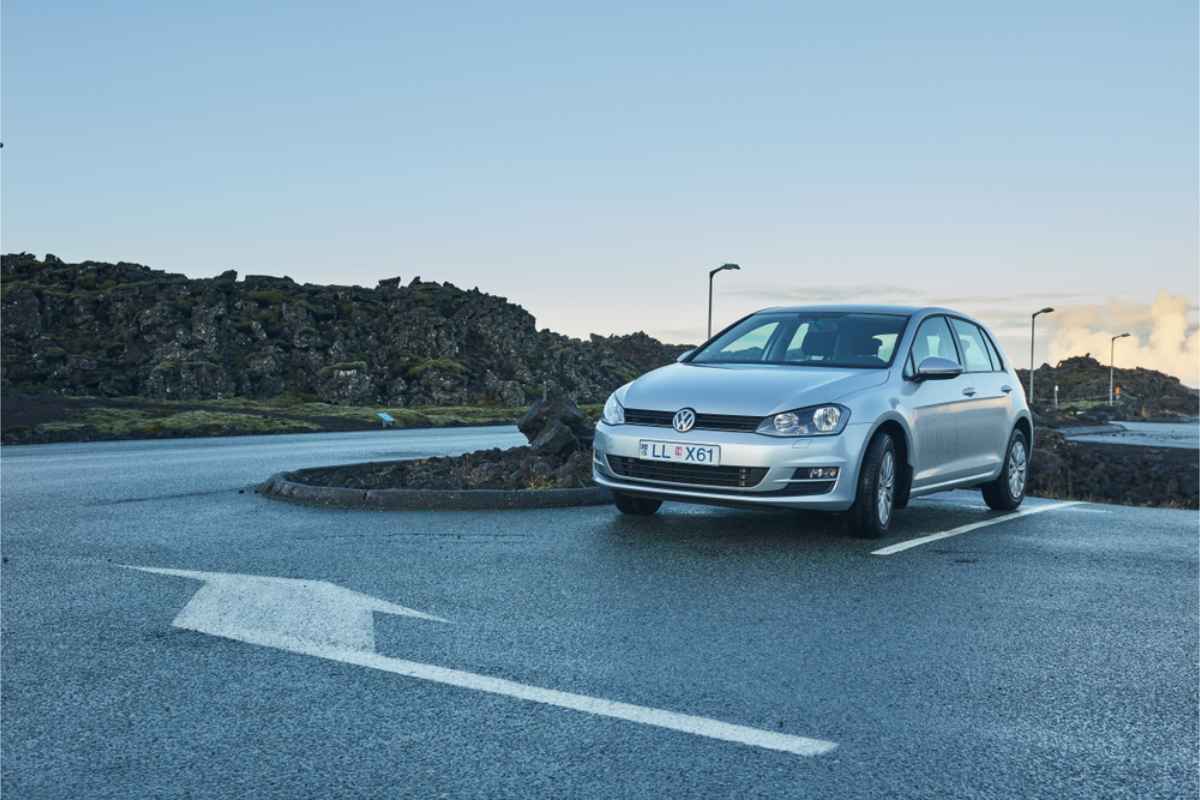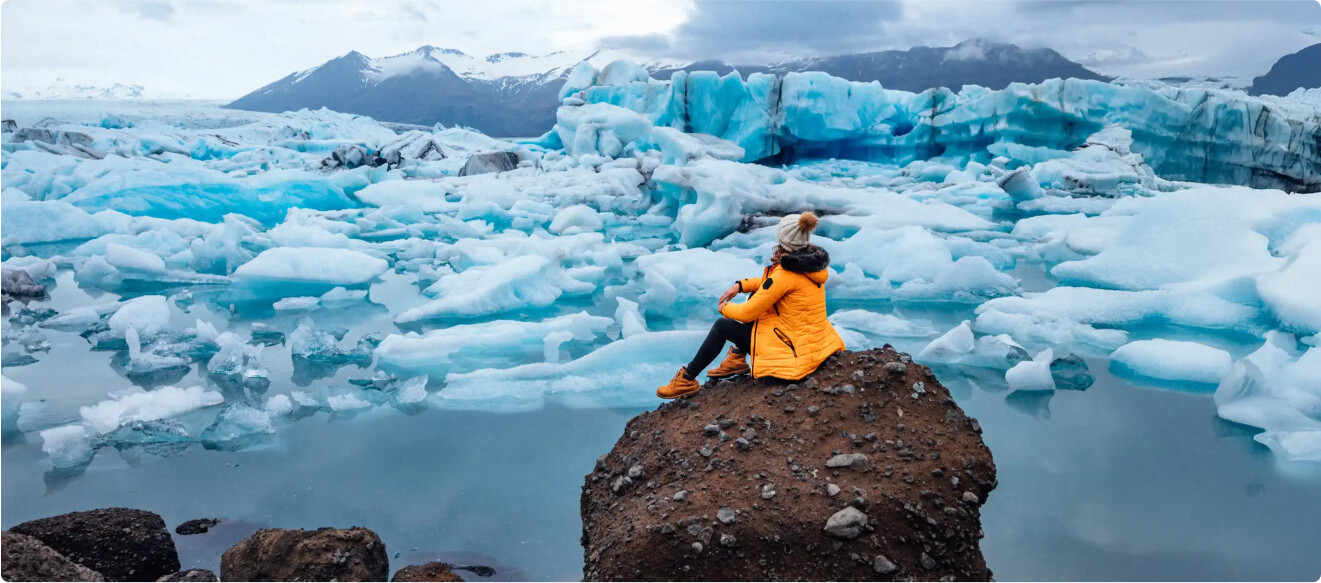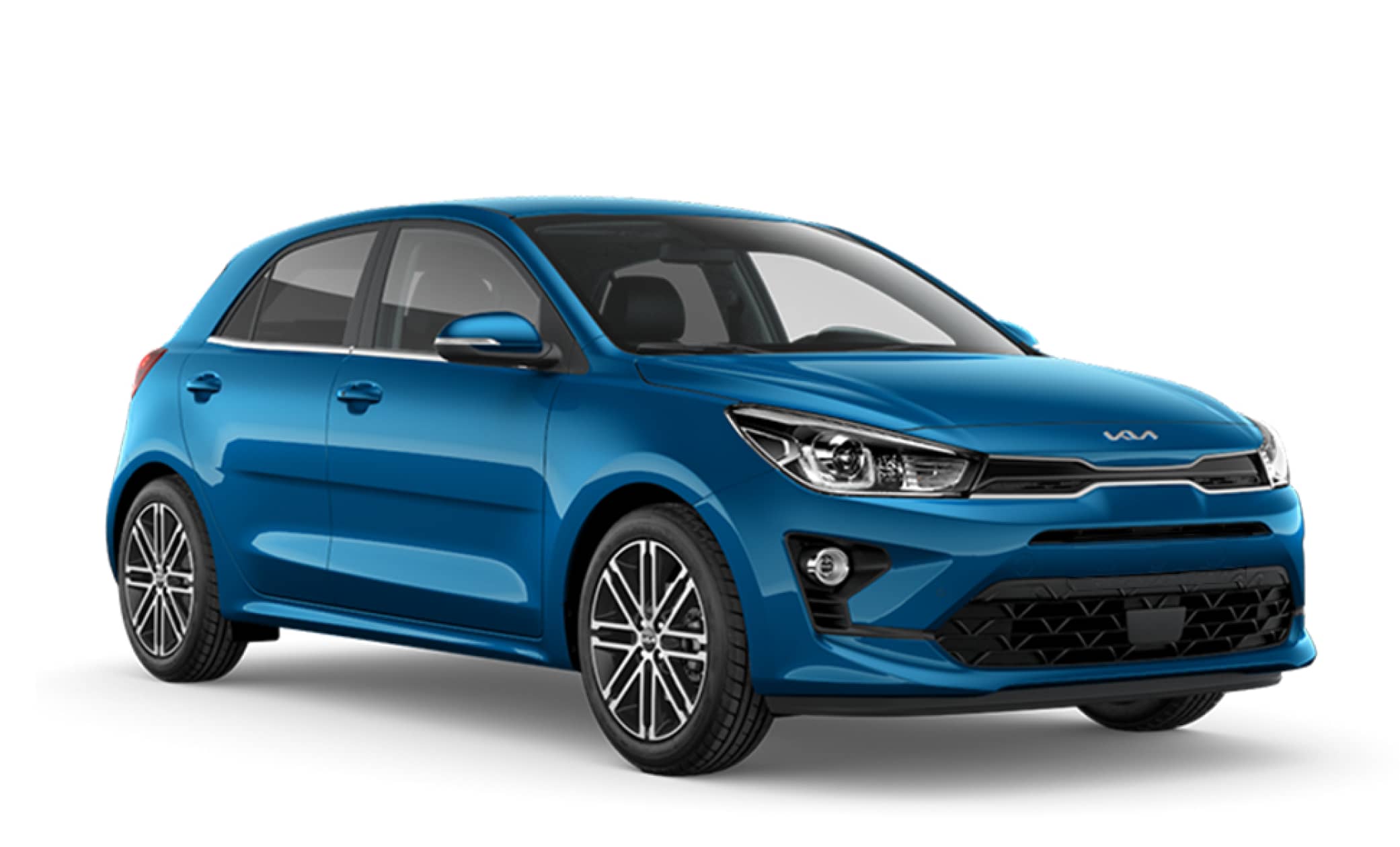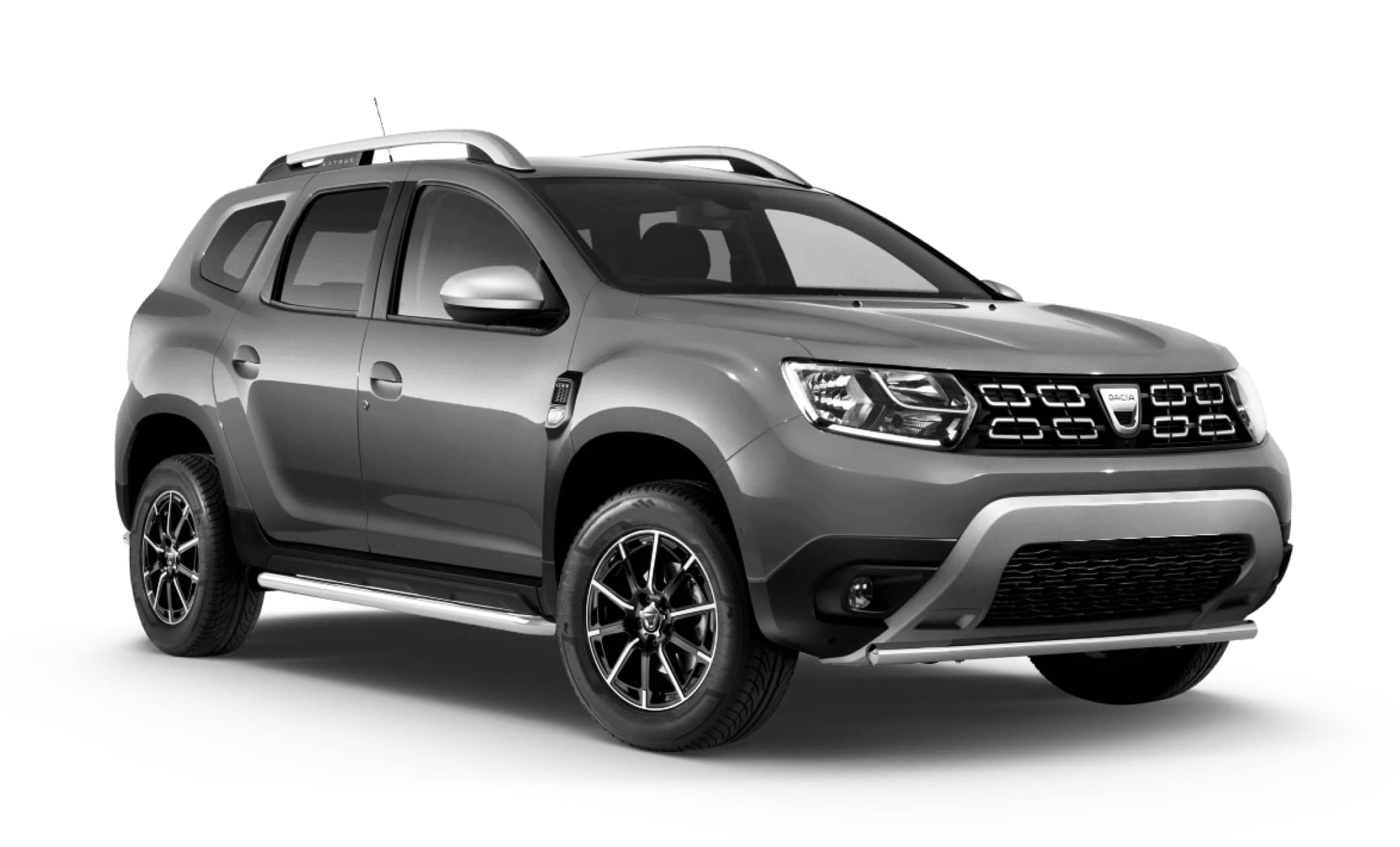So, is a car necessary inside Reykjavik? That’s the first question people type into Google after booking their flights and realizing Iceland isn’t exactly known for cheap taxis. Sure, Reykjavik itself is small compared to other famous capitals like Washington or Paris. And, to be fair, you can walk across the city center quite fast and with ease to most of the major attractions. But here’s the part guidebooks skip. The city is not why you came.
The northern lights, thundering waterfalls, steaming lava fields, black-sand beaches… none of that waits politely within walking distance of your hotel. Sure, buses exist. Tours exist. Even scooters exist if you like feeling cold and silly at the same time. None of them gives you the freedom to chase a rainbow over Gullfoss or pull over for that roadside hot dog stand everyone swears by.
This guide isn’t here to sell you on one answer. It will give you both sides. When a car is a pointless weight, when it’s your best friend, and why most visitors regret not renting one sooner. We’ll cover walking, buses, traffic headaches, and the truth about Reykjavik parking. Then we’ll look at day trips, weather, kids, luggage, and all the things brochures glaze over. At the end, you’ll know the real deal: if your trip stops at downtown Reykjavik, no car is needed. If your trip is to Iceland, then yes, the keys matter.
Is a Car Necessary Inside Reykjavik?
The short answer is no. A car is generally not needed for exploring our downtown district. Recent public transport improvements make getting around without a vehicle both practical and cost-effective. But let’s jump into some more juicy details so that you can get the full scope of whether you need a car in Reykjavik or not.
How to Get Around Reykjavik Without a Car
Getting around Reykjavik without a car is easier than most visitors expect. The city center, postal codes 101 and 107, is so compact you can cross it on foot in under an hour. From Hallgrímskirkja Church to the Harpa Concert Hall and down to the Old Harbour, everything lines up neatly for pedestrians. The streets are flat, the sidewalks wide, and Rainbow Street (Skólavörðustígur) makes even a cold stroll feel like part of the attraction. Walking is the cheapest, simplest way to see downtown, provided the weather isn’t trying to ruin your day.
If your legs give up, the Strætó bus system is now far more reliable than it used to be. After the 2025 upgrade, 27 routes cover the capital area. Routes 1 and 6 arrive every 10 minutes, while most others come every 15-30 minutes. Over half of residents now live within 400 meters (1,312 feet) of a frequent stop.
Transfers are painless thanks to five central hubs, though you’ll need to pay attention to zones and timings. Tickets cost about $5 for 75 minutes, which feels steep when compared to New York’s $2.90, but Iceland was never a budget destination anyway. Payments are cashless: Strateo app, card, or city pass only.
For shorter rides, scooters from Hopp or Reykjavík Rollers zip across the city center. They’re eco-friendly, fun, and faster than trudging in the wind. Bike-sharing programs, once common, died off after the COVID pandemic. The only option now is renting from a shop, and prices are high enough to make most folks think twice.

Parking and Traffic Considerations
Parking in Reykjavik feels less like freedom and more like a chore. Finding a space is the real headache. During business hours, roughly 8:00 to 16:00, spots vanish fast. Narrow streets, constant construction, and growing congestion slow everything down.
Police report hundreds of speeding violations each month, and over 40 percent of drivers blow past reduced limits in monitored zones. The fines bite hard, too, starting at 10,000 ISK (about $70). For people, the math rarely adds up.
Time wasted circling for parking often exceeds the short walk needed to reach the same place. Add in stress, ticket risks, and cramped roads, and it is clear why many drop the keys. Most leave their rental car at the hotel and explore the compact city center on foot or by bus.
When Renting a Car Makes Sense
So you keep asking yourself, ‘Do I need to rent a car in Iceland,’ or can you fake it with buses and tours? Truth is, some trips work fine without wheels, but for the real Iceland, a car stops being optional and starts being essential.
Exploring Beyond the Capital: Day Trips
Let’s put up the final debate on whether you need a car in Reykjavik or not. Please hear us out. But once you step outside those walkable blocks, everything changes. Iceland’s greatest sights are scattered across valleys, coasts, and lava fields with hours of road between them.
Public buses won’t get you to geysers erupting in the Golden Circle or waterfalls crashing along the South Coast. Tours will, but at their price, their schedule, and their pace. With your own car, you leave when you want, stay late for golden hour, or pull over when the light catches a mountain just right. Families avoid paying for four separate tickets.
If you’re a photographer, then you can avoid being rushed back to the bus. Even a simple detour can turn into the highlight of the trip. The capital is your hub, but freedom lies on the road. Without wheels, Iceland shrinks. With them, it opens up.

Visiting Iceland in Winter or Shoulder Seasons
Winter in Iceland is not for the unprepared. From November to March, daylight shrinks to just 4-5 hours, which means every trip outside Reykjavik has to be timed like a military exercise. Public transport cuts back, many tours go on pause, and suddenly, a rental car becomes less of a choice and more of a lifeline.
The catch is that winter driving is serious business. You need a 4x4 with proper winter tires, and you need to keep checking vedur.is and umferdin.is as if your safety depends on it, because it does. Storms roll in fast, roads close, and the only real advantage is having the flexibility to adjust on the fly.
Shoulder seasons, April to May and September to October, are the sweet spot. You get longer days, open roads, fewer crowds, and milder weather. With a rental car, you can chase the Northern Lights or slip into the highlands before winter locks them away.
Traveling with Kids, Groups, or Lots of Luggage
Traveling with kids or groups in Iceland almost forces you into renting a car. The law is clear: children under 135 cm (4'5") need proper car seats, and skipping that will cost you ISK 30,000 ($230). We do provide child car seats, but having your own vehicle guarantees compliance and makes life easier.
Now imagine tackling Reykjavik buses with strollers, bags, and tired children. Absolute chaos. A car gives families the room they need for snacks, toys, winter layers, and souvenirs that pile up fast. It also means you can stop when you want for food, bathroom breaks, or a meltdown rescue.
Groups face the same logic. Six adults with luggage will never fit comfortably into public transport, and splitting up costs more and complicates coordination. Larger rentals like SUVs and minivans solve that problem, though you still need to check trunk space. A Toyota Land Cruiser’s trunk, for example, only measures 37.5 cubic feet (1062 liters).
Which Type of Car Do You Actually Need?
Not all cars in Iceland are created equal, and picking the wrong one can turn your trip into a comedy of errors. Here are some popular models we have selected from our fleet so you can make a better informed decision about what car will suit your needs.
|
Category |
Example Vehicles |
Seats |
Drive |
Best For |
|
City & Budget Cars |
Toyota Aygo, Kia Rio |
4-5 |
FWD |
Quick city runs, couples, budget-friendly trips |
|
Crossovers & Wagons |
Kia Cee’d, Kia XCeed |
5 |
FWD |
Comfortable road trips, small families, moderate luggage |
|
SUVs & 4x4s |
Dacia Duster, Toyota RAV4, Land Cruiser |
5-7 |
4WD |
Winter driving, gravel roads, F-roads, exploring remote areas |
|
Electric Vehicles |
Opel Corsa Electric, Tesla Model 3 |
4-5 |
FWD |
Eco-conscious travelers, city and Ring Road drives |
|
Family & Group Vans |
Dacia Jogger, Renault Trafic |
7-9 |
FWD/4WD |
Families, large groups, and hauling serious luggage |
How Much Does It Really Cost to Rent a Car in Iceland?
To rent a car in Iceland might cost a bit more than you think. Small cars like a Toyota Aygo run $40 to $90 per day, mid-size models such as a Toyota Corolla land between $70 and $140, and 4x4 SUVs like a Toyota RAV4 climb to $100 to $220 daily.
Summer spikes those rates nearly double, while winter and shoulder months bring relief. Fuel adds another sting: petrol prices in Iceland are around ISK 325 per liter, about $9.30 per gallon, with diesel only slightly cheaper. Insurance is unavoidable if you value your sanity.
Gravel Protection, Sand and Ash Protection, and Super CDW tack on $12 to $45 per day, but cover the damage Iceland is famous for inflicting. Extras like GPS, Wi-Fi, and child seats cost more, plus young driver and extra driver fees.
Pros and Cons of Renting a Car in Reykjavik
As with all things in life, there is the good, the bad, and the ugly. Let’s take an honest look at the good side and the bad side of getting around Reykjavik by car and on foot.
Pros: Freedom, Comfort, Flexibility
|
Advantage |
Description |
|
Freedom |
Explore Iceland at your own pace without time constraints |
|
Comfort |
Travel tailored to your own preferences and needs |
|
Flexibility |
Ability to visit off-the-beaten-path locations and make spontaneous stops |
|
Convenience |
Carry luggage and gear easily |
|
Access |
Reach remote attractions beyond public transport |
|
Cost-effective for groups |
Splitting rental costs often cheaper than multiple tours |
|
Personalized itinerary |
Plan your route without being tied to fixed schedules |
|
Privacy and safety |
Personal space reduces stress and exposure compared to public transport |
|
Time-saving |
No waiting for buses or tours, start and finish the day on your own terms |
Cons: City Driving and Parking Costs
|
Disadvantage |
Description |
|
City Traffic |
Navigating busy Reykjavik streets can be stressful |
|
Parking Costs |
Parking downtown is expensive, ranging $1.60-$4.40 per hour |
|
Parking Difficulty |
Finding available parking can be time-consuming |
|
Fines |
Parking violations carry hefty fines (starting around $70) |
|
Congestion |
Peak times increase driving delays and frustration |
Tips for Driving and Parking in Reykjavik
Getting around Reykjavik with a car is not just about holding the wheel; it is about understanding parking zones, fees, and the unwritten rules locals expect you to know. Don’t skip this par,t or might regret it.
Zones, Fees, and Free Parking Tips
Parking zones in Reykjavik is its own mini game. The city splits into four zones: P1 painted red or pink, P2 orange, P3 yellow, and P4 green. The closer you get to the action, the higher the price.
P1 runs 630 ISK per hour, about $4.40, with a maximum stay of three hours. P2 to P4 sit at roughly 230 ISK per hour, about $1.60, and allow longer parking. Hours are strict, usually 9:00 to 21:00 on weekdays and 10:00 to 21:00 on weekends, though each zone posts its own rules.
Free parking does exist, but you will need to look outside the center. Park-and-ride lots near bus stops are a local trick for skipping fees. Ignore the signs and you risk a fine starting at 10,000 ISK, about $73. Apps like Parka and Straeto make paying easier. Electric vehicles get a softer deal with more charging spots and occasional discounts.
Local Driving Laws and Etiquette
Driving in Iceland is less about speed and more about respect. The city enforces tight speed limits, usually 30 to 50 km/h (19 to 31 mph), with even lower limits near schools and pedestrian zones. Iceland also takes drinking and driving seriously. The legal blood alcohol limit sits at 0.02 percent, which is essentially zero tolerance.
Seatbelts are mandatory for everyone, front and back. Children under 135 cm (4’5”) must sit in proper car or booster seats, and police issue fines if this rule is ignored. Mobile phones are banned unless you use a hands-free setup, and police check for violations.
Reykjavik’s streets are generally well-marked but often narrow with one-way systems that demand attention. Pedestrians always win at crosswalks, and roundabouts follow a simple rule: cars already inside have priority, and you must signal before exiting.
Parking etiquette is strict. Blocking driveways, bus stops, or hydrants will land you a fine, and sloppy parking across bays is not tolerated. Add cyclists and e-scooter riders weaving through traffic, and patience becomes essential.
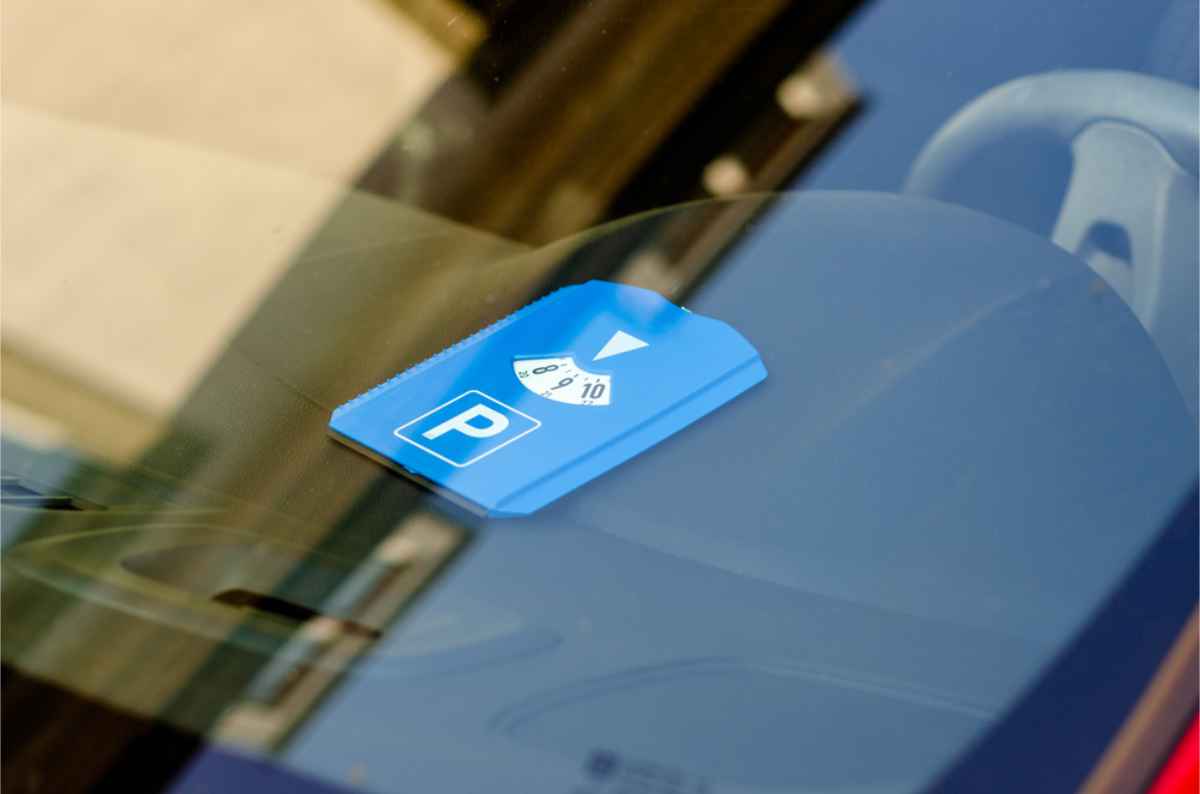
Best Day Trips from Reykjavik with a Rental Car
If you’re still wondering if getting around Reykjavik without a car is still doable, then good luck getting to these amazing spots next on our lineup.
The Golden Circle
The Golden Circle is probably Iceland’s most famous tourist route. It follows a 300-kilometer (190-mile) loop from Reykjavik. It takes about six to eight hours to drive the route, but you will spend half the time stopping because every corner screams for attention. Three main stars headline the trip.
First is Thingvellir National Park, sitting just 45 kilometers (28 miles) northeast of Reykjavik. It is where Iceland’s first parliament met in 930 AD, and where the earth literally splits between the North American and Eurasian tectonic plates. You can stand with one foot on each continent if that kind of party trick excites you.
Next up is the Geysir geothermal area. The original Geysir is mostly asleep now, but Strokkur steals the show by blasting water 20 to 30 meters high (65 to 98 feet) every few minutes.
Then comes Gullfoss, the ‘Golden Waterfall,’ dropping in two stages for a total of 32 meters (105 feet) into a roaring canyon. The mist, rainbows, and sheer noise make it unforgettable. Optional stops pad the day nicely. Kerid volcanic crater glows with red rock and a blue lake, while the Secret Lagoon offers a hot soak.
Reykjanes Peninsula
The Reykjanes Peninsula sits about 50 kilometers (31 miles) southwest of Reykjavik and packs a volcanic punch into a small area. It is most famous for the Blue Lagoon, a man-made geothermal spa filled with mineral-rich seawater heated to a steady 37 to 40°C (98 to 104°F). People slather silica mud on their faces and soak in the warm, milky water while surrounded by black lava fields.
The peninsula is part of the Reykjanes UNESCO Global Geopark, which stretches across lava flows, steaming vents, and volcanic craters. At Krysuvik, you find colorful hillsides split by bubbling mud pools, while Gunnuhver, Iceland’s largest mud pool, hisses and steams like an angry giant.
For a coastal setting, the Valahnukur cliff offers panoramic views of the Atlantic and plenty of seabirds nesting on the rock. Just nearby, Reykjanesviti lighthouse, Iceland’s oldest lighthouse, stands at the southwestern tip, guiding ships since 1878.
The compact size of Reykjanes means you can see most highlights in one day, yet it still rewards slower exploration. Trails like Sundhnuksgigar wind across fresh lava formations from eruptions in 2021, letting you walk directly over Iceland’s restless geology.
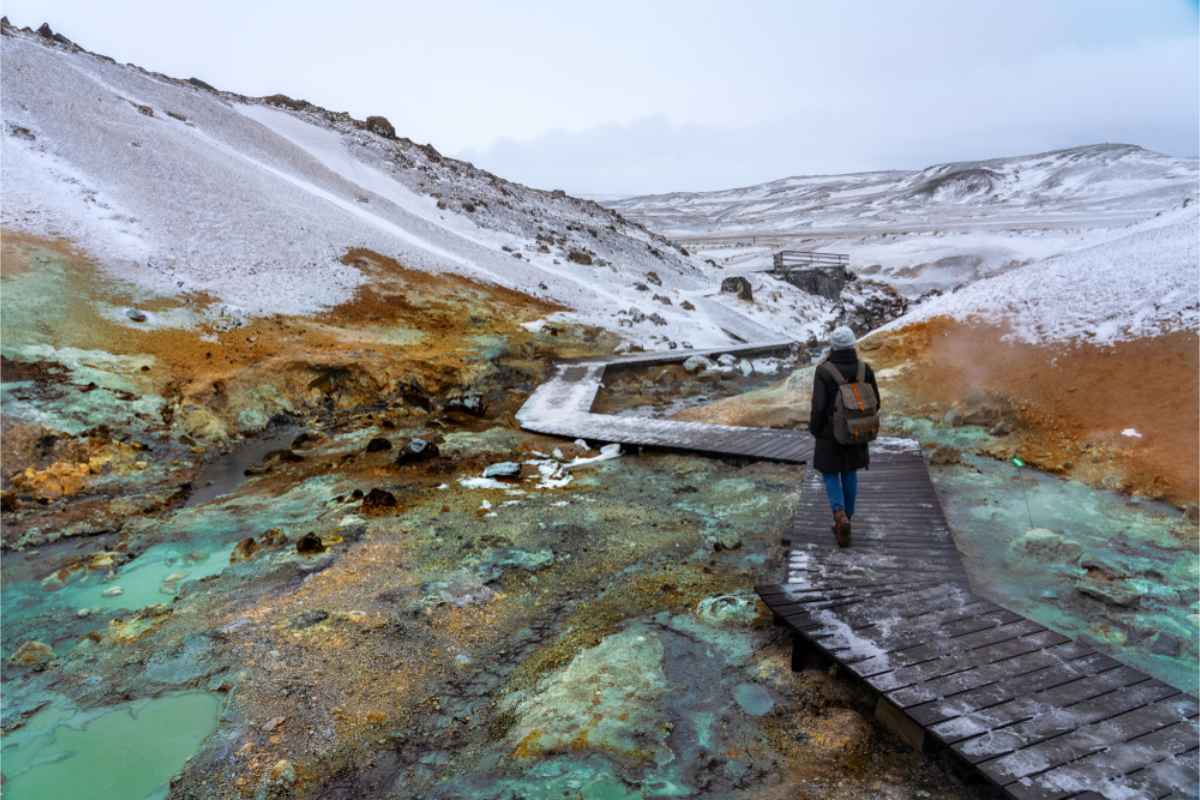
South Coast Highlights
The South Coast is where our country really likes to show off. Hugging the Ring Road east of Reykjavik, this stretch throws everything at you: waterfalls, glaciers, black volcanic beaches, and villages that look like they were carved out of the cliffs.
Seljalandsfoss is usually the first stop, a 60-meter (197-foot) waterfall with a path that sneaks behind the curtain of water. You will get wet, but it is worth it. Not far away, Skogafoss, another 60-meter (197-foot) waterfall, thunders down with raw power, and a staircase beside it leads to trails that climb into the highlands.
Further along sits Reynisfjara Beach, a black sand shoreline with towering basalt columns and sea stacks rising from the Atlantic. It is stunning, but the waves here are dangerous, so always watch the waves when you are close to the water and never turn your back.
The village of Vík makes a convenient base, framed by cliffs and known for its birdlife. In summer, when daylight seems endless, you can push farther to Jokulsarlan Glacier Lagoon, where massive icebergs drift toward the sea.
Do You Need a Car in Reykjavik or Just Good Shoes?
So, do you need a car in Reykjavik? Inside the city, not really. Good shoes and a bus pass will get you around just fine. But the second you want waterfalls, glaciers, or black sand beaches, the answer flips. A rental car gives you freedom, warmth, and control that tours and timetables never will.
Don’t waste your trip waiting at bus stops while Iceland’s best sights sit hours away. Grab the keys, take the wheel, and see the country on your terms. Reach out to us with any questions before you book. And no, scooters don’t count as freedom.




